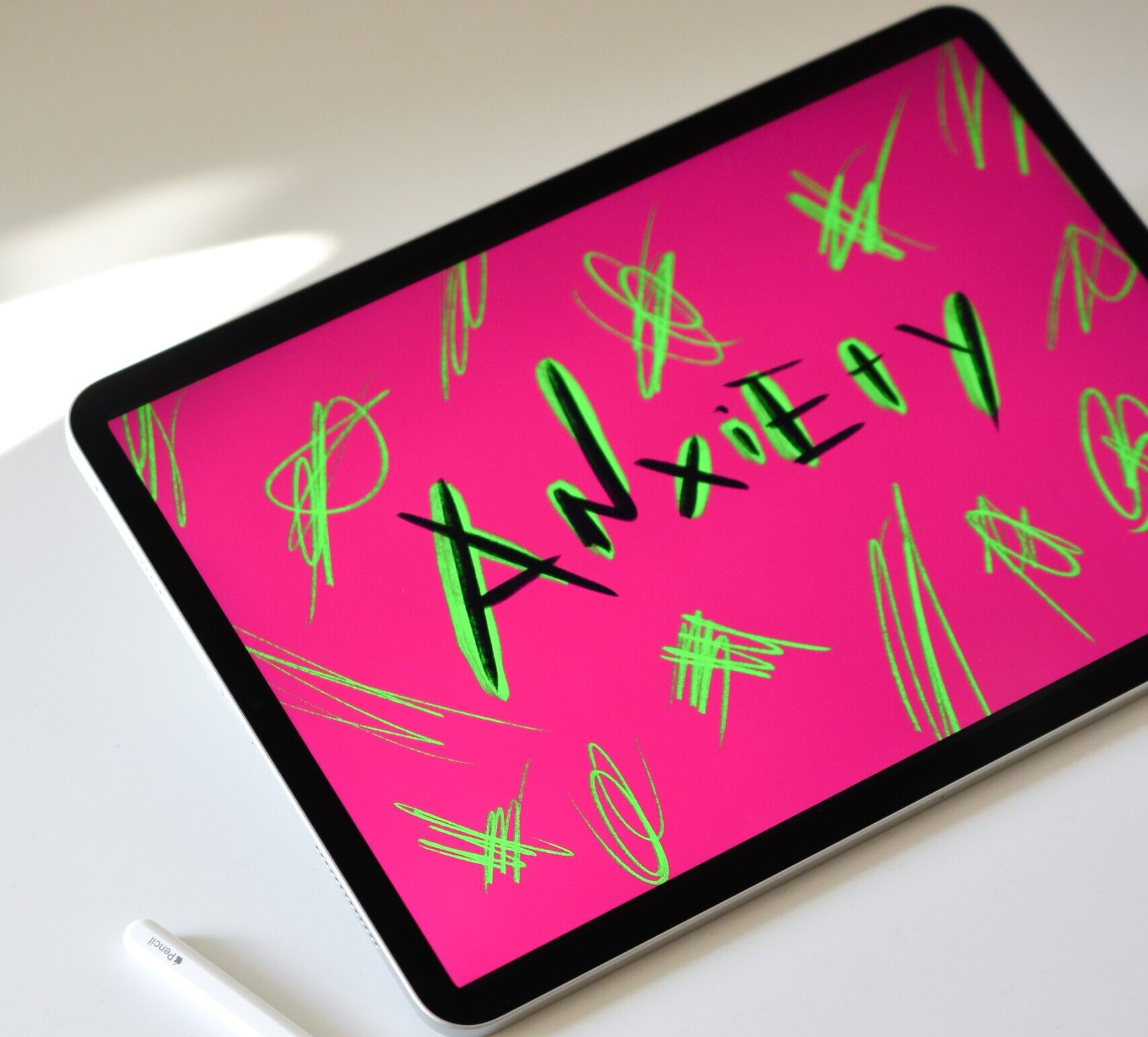
Anxiety is typically defined as a feeling of worry and unease. Everyone will likely experience feelings of anxiety during certain times in their lives, for example when preparing for a job interview or when going on a trip. Milder symptoms can be managed with self-care.
However, if you find that you are worrying excessively and it is impacting your daily life, this is when anxiety becomes a mental health problem.
Although it is classed as a mental health diagnosis, severe anxiety can also have an impact on your physical health too – in this video, Alex tells us his experience of anxiety and how it led to physical symptoms:
There are different types of anxiety disorders that can affect individuals. This list is not exhaustive, as different forms of anxiety can often be present in other types of mental health diagnosis.
Generalised anxiety disorder (GAD) causes individuals to worry about various situations in their lives, rather than over one specific event. Because of this, individuals that suffer from generalised anxiety may find that they are constantly on edge and struggle to relax.
Symptoms of GAD include a constant feeling of unease, feeling restless, having trouble falling asleep or waking frequently during the night due to worrying, finding it hard to concentrate, dizziness and heart palpitations.
The exact cause of GAD is unknown; however, it is believed that there are a few different factors that could influence the likelihood of a GAD diagnosis. These include:
Social anxiety is a long-term condition that is characterised by the fear of social situations. Social anxiety can be debilitating and can lead to isolation and relationship breakdowns.
Individuals with social anxiety may experience the following symptoms:
Panic disorder is identified by regular, sudden attacks of fear and panic. These attacks occur regularly and often have no apparent trigger.
The exact cause of panic disorder is not known; however, it is thought to be related to some of the following: stressful and traumatic life events, having a close relative with panic disorder, and/or an imbalance of neurotransmitters in the brain.
It is important to manage the symptoms of panic disorder as it can lead to developing phobias such as agoraphobia.
Many people think that OCD is being obsessively clean, neat and tidy, but this is a common misconception.
Obsessive compulsive disorder (OCD) can affect both adults and children, and is a disorder characterised by obsessive thoughts and compulsive behaviours.
Obsessive thoughts are repeated, unwanted thoughts that can be unpleasant and cause feelings of unease and worry. Compulsive behaviours are repetitive behaviours that you feel compelled to do to relieve the obsessive thoughts.
For example, an individual with OCD may have to perform an action multiple times as they believe something bad would happen if they do not. This could be switching a light switch on and off repeatedly for a certain number of times, or repeatedly checking all windows and doors are locked before leaving the house.
Post-traumatic stress disorder (PTSD) is an anxiety disorder that is triggered by highly stressful or distressing events, such as war, serious assault, or severe road accidents.
PTSD can develop immediately after the event, or weeks, months or years later.
The most common symptom of PTSD is flashbacks or nightmares. Individuals with PTSD will experience frequent flashbacks and/or nightmares about the traumatic event. This will then lead to further physical symptoms such as nausea and sweating.
Other symptoms of PTSD include a constant feeling of anxiousness and unease, finding it difficult to relax, emotional numbing (suppressing feelings), headaches, dizziness, stomach aches, chest pains and problems with sleeping.
High functioning anxiety is not an official anxiety diagnosis, it is a term that is used to describe individuals who are living with an anxiety disorder but are managing to live what looks like a “normal” life on the surface, appearing calm and collected even when deep down they are in a constant state of worry.
This may be because they are managing their symptoms really well, or because their anxiety is allowing them to run on adrenaline. High functioning individuals are more likely to harness their nervous energy to function.
High functioning individuals are still able to go to work, go to social events, and partake in everyday activities while appearing calm and in control.
Read more about what it’s like to have high functioning anxiety.
In contrast, individuals with low functioning anxiety are consumed by their worries, and struggle to continue going out to work or attending social events.
Northern Healthcare provide support to individuals living with a mental health diagnosis, learning disability or autism. Learning to live with anxiety may form part of an individual’s support plan and our teams work closely with individuals to identify and manage their anxiety to promote independence and recovery. We provide an enhanced supported living model with support from Occupational Therapists and Mental Health Nurses, find out more here.
Living with anxiety can be challenging but there are support and treatment options available to help manage your symptoms.
Anxiety UK has a range of information and resources on their website. You can access a community of like-minded people and anxiety support groups, browse a comprehensive network of UK Approved Therapists, and gain discounts on anxiety management courses. The website also features an archive of free resources that include self-help books, information booklets, workbooks, breathing exercises and more.
Mind offer information and advice on anxiety and panic attacks, including the different treatment options that are available.
The NHS webpage on anxiety also has lots of useful information.
If you need further support, you can speak with your GP who will be able to advise on the different treatments and discuss the best treatment option for you. Your GP can also refer you to specialist services, or you can refer yourself through the NHS IAPT service.
Photo by Hello I’m Nik on Unsplash.